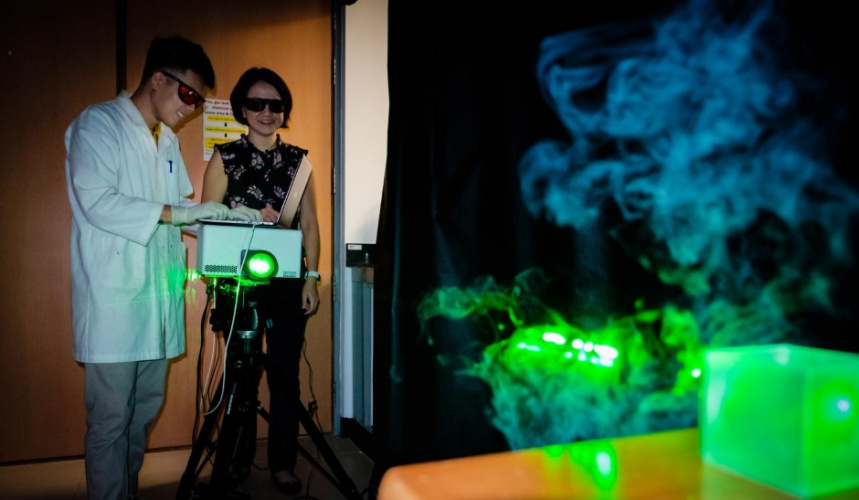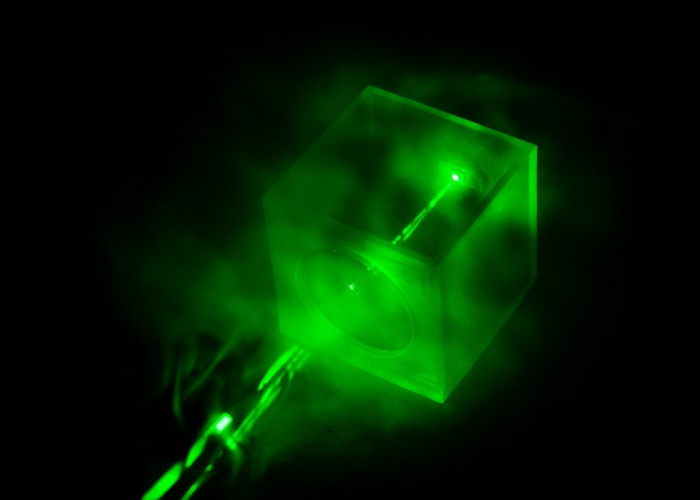
The prototype device from a team at Nanyang Technological University, Singapore (NTU Singapore) provides real-time monitoring of air quality and is said to be suitable for rapid deployment by first responders.
A research team led by Associate Professor Ling Xing Yi at NTU’s School of Physical and Mathematical Sciences developed the system, which is been described in ACS Nano.
Current methods of identifying potential airborne hazards use Gas Chromatography - Mass Spectrometry (GC-MS), which is reliable but requires sample collection and can take between a few hours and a few days to obtain results, making GC-MS unsuitable for scenarios requiring fast and ongoing analysis of potential air contamination.
Nanocage aims to trap and release hydrogen on demand
Smart fabric can detect and protect against toxic gases
The new device uses a small patch made of a porous and metallic nanomaterial to first trap gas molecules. When a laser is shone on it the light interacts with the gas molecules, causing light of a lower energy to be emitted. When analysed, it gives a spectroscopic readout in graph chart format.
The spectroscopic readout acts like a "chemical fingerprint" corresponding to various chemicals present on the patch. The whole process is said to take about 10 seconds to complete.
These chemical fingerprints from the sample are referenced against a digital library of fingerprints to determine what chemicals have been detected.
Raman spectroscopy is a long-established technique for identifying chemical substances but is used on solid and liquid samples because gaseous chemicals are too dilute for the laser and detector to pick up.
To overcome this limitation, Assoc Prof Ling and her PhD student Phan Quang Gia Chuong developed a special nanostructure made from a highly porous metal-organic framework (MOF), which actively absorbs and traps molecules from the air.

This nanostructure also contains metal nanoparticles, which boost the intensity of the light surrounding the molecules. The result is a claimed million-fold enhancement in the Raman spectroscopy signals, which allows for the identification of the trapped molecules.
Airborne hazards
In order to avoid hazards, the team conceptualised the idea of identifying gases instantly from a distance.
"The operation of the laser camera and analysis of chemicals can be done safely,” Assoc Prof Ling said in a statement. “This is especially useful when it is not known if the gases are hazardous to human health.”
The laser was tested to work up to 10m away and can be engineered to reach further distances. Another possible method is to use the chip to capture gases, which is subsequently analysed with a laser.
In experiments, the team showed that the device can identify airborne molecules such as polyaromatic hydrocarbons (PAH), including naphthalene and derivatives of benzene, a family of colourless industrial air pollutants known to be highly carcinogenic.
It can detect PAHs at parts-per-billion (ppb) concentrations in the atmosphere as well as performing continuous monitoring of the concentration of the different types of gases like carbon dioxide (CO2) in the atmosphere.
The team has filed for a patent and is now commercialising the technology.




Nanogenerator consumes CO2 to generate electricity
Whoopee, they've solved how to keep a light on but not a lot else.